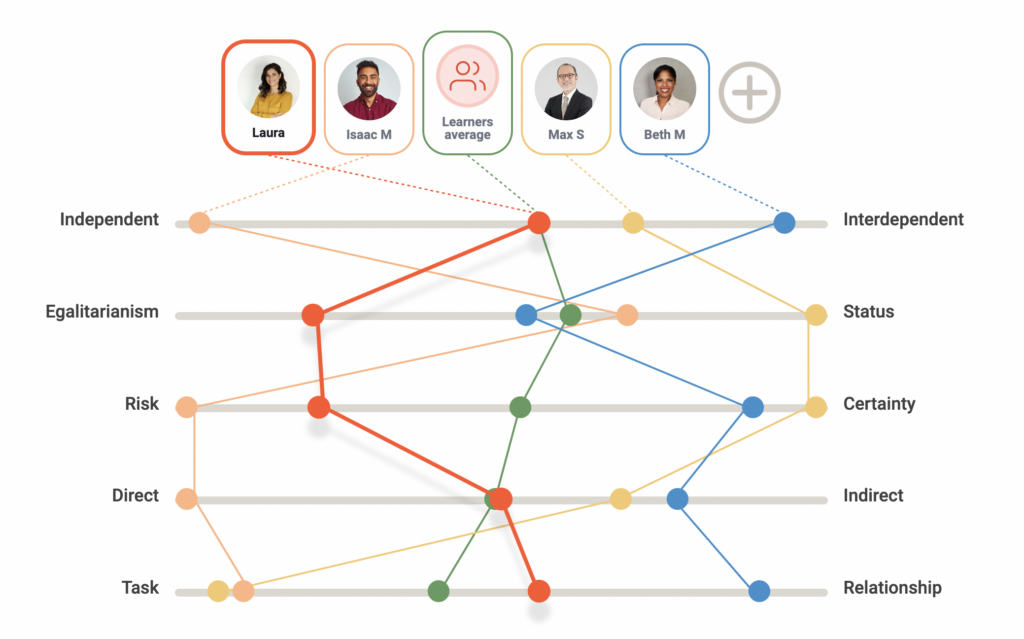


Mergers, acquisitions, and spinoffs can take various forms, but the common denominator is change. The larger the scale, the more change is likely, and the greater resilience will be required from participants—not just to survive, but to move forward as innovators. Employees in companies going through such a major transaction are likely to encounter new colleagues, new countries, new teams, and a new organizational culture. Mergers and acquisitions (M&A) as well as spinoffs are on the rise in the current economic environment, and both the business press and key dealmakers are predicting more to come.
Whether your new colleagues are at home or abroad, a reshuffling of the organization will probably bring you into contact with people who have different work styles than those you have previously encountered. Comparing your GlobeSmart Profile with your new counterparts is a useful first step toward understanding them better as people and planning how to work together effectively.
The five work style dimensions in the GlobeSmart Profile do not suggest that one perspective is right and another is wrong, but rather give people an objective way to consider how they might be both similar and different. If one person is a more direct communicator and their counterpart is more indirect, for example, they can implement the recommendations that the GlobeSmart Profile also provides for working with each other. The Profile allows each person to affirm their own work style identity while bridging differences between themselves and others.

For leaders and employees working with new colleagues during a period of transition, Aperian learning modules on topics including empathy, psychological safety, and allyship are additional resources to further enhance skills for handling differences with others.
When your new counterparts are from different and unfamiliar countries, additional learning is important to ensure that you understand their business environment, local norms, and customer preferences. In the case of an acquisition, for example, a country subsidiary of the acquired organization might also have the scale, technology, and local brand reputation that makes it challenging to integrate it with your company’s legacy subsidiary.
GlobeSmart Guides provide a wealth of information for more than 100 countries. Many of these Guides also cover local diversity factors and inclusion challenges that may be different from your circumstances at home—for example, ethnic, religious, or regional differences within the country might be critical to knowing which groups have been marginalized, and issues related to gender may take various forms.

After an M&A transaction or spinoff, the vital process of integration and realignment commonly occurs within teams. These teams could be functional, project-based, regional, or focused on a particular line of business. A team’s GlobeSmart Profile, which maps and compares the Profiles of all team members, provides a way for team participants and team leaders to see the range of styles present on the team, and to bring out the best contributions from each person. For instance, a more independent team member may prefer to tackle a task on their own, with minimal oversight, while a more interdependent team member will probably be more comfortable working in a small group with others.
A team’s GlobeSmart Profile helps team members understand the different work styles present on the team and avoid situations where some feel unseen, unheard, and underutilized. One sample team, crucial to the success of a huge merger, achieved a breakthrough that started with the realization that team members brought with them different implicit assumptions about how decisions should be made—together they developed their own new process that blended elements of both more consultative and more directive decision styles.

Large-scale transactions also produce a “Newco” that must establish an organizational culture with a shared vision and set of goals that employees find compelling. Otherwise it is natural for people to focus on what they have lost—former colleagues, leaders, or corporate characteristics. In the case of one not so successful acquisition, members of the acquired organization were still using branded gear with the logo of their previous company more than a decade into the bumpy integration process. Spinoff employees may also feel that they have been cast off from the “mother ship,” and are now part of a smaller, less prestigious, and possibly less stable organization.
Another common hazard of mergers, acquisitions, or spinoffs is losing key employees who interpret the changes as a cue for them to move on, perhaps because they are feeling uncertain about their own personal role in the new setup or the perceived tone of the new organization and its leadership. In order to shift their loyalties to the new organization, they need to have a fresh, compelling perspective on what is now possible thanks to the transaction, and how they personally can contribute.
There are several ways to measure progress toward getting employees fully engaged with their new roles and thereby retaining valuable talent. One of these is the Inclusive Behaviors Inventory℠ (IBI), which offers specific skills and recommendations to individual users for how to behave inclusively. The IBI also pinpoints forms of inclusion that employees find challenging overall, indicates progress the organization is making across the board, and suggests where to focus efforts going forward. Building such inclusive behaviors throughout your new organization is a useful way to target, support, and measure inclusion, and guide employees through the transition.
